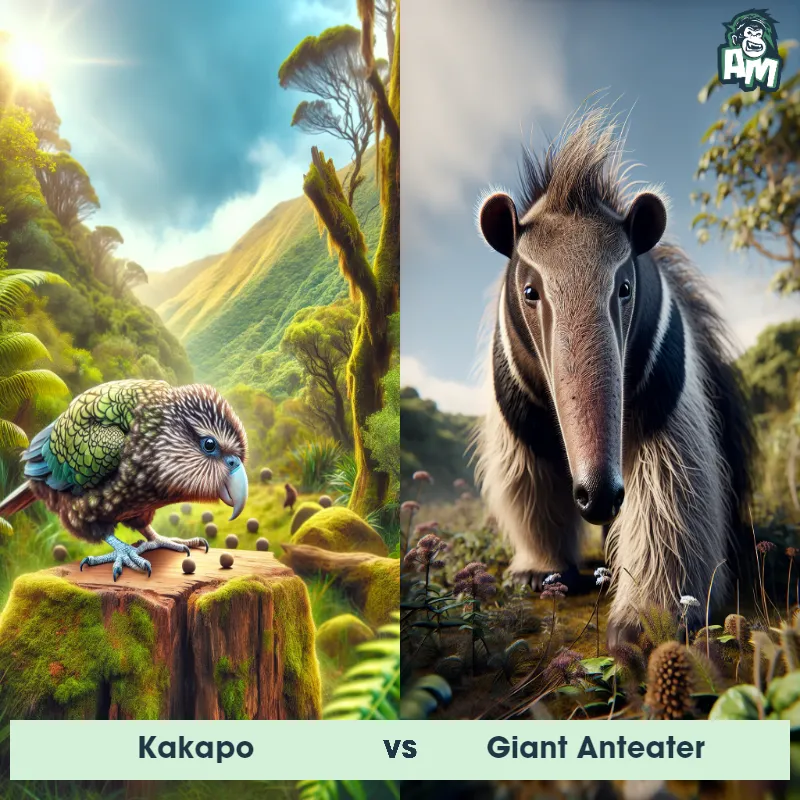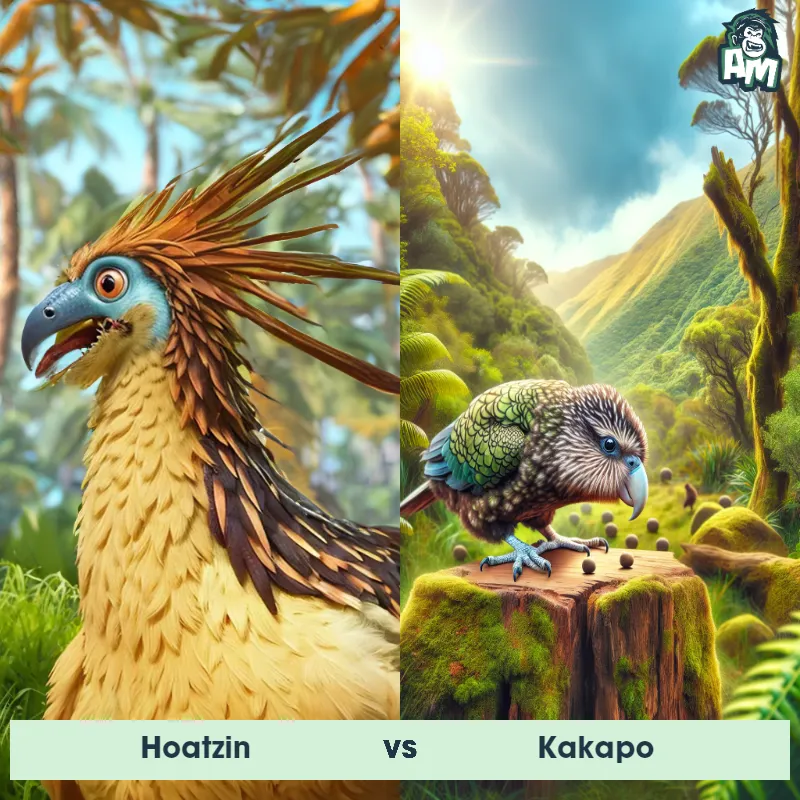The Kakapo
The Kakapo, also known as the "owl parrot," is a unique and critically endangered bird native to New Zealand. With its distinct moss-green feathers, it possesses a large, robust body and a relatively short beak. Unlike most parrots, the Kakapo is flightless, relying on its strong legs for movement. Known for its nocturnal habits, the Kakapo is also famed for its booming call, which can be heard for kilometers. With a lifespan of up to 90 years, the Kakapo is one of the longest-living birds in the world.

| Kakapo | |
|---|---|
| Size | 60 cm (24 in) |
| Weight | 4 kg (8.8 lbs) |
| Speed | 3mph (4.8km/h) |
| Key Strength | Agility and climbing skills |
| Biggest Weakness | Flightlessness |
| Scientific Name | Strigops habroptila |
| Family | Strigopidae |
| Habitat | Dense forest |
| Geography | New Zealand |
| Diet | Herbivorous, mainly feeds on leaves, bark, fruits, and seeds |
| Lifespan | 58 years - 90 years |

The Kakapo
The Kakapo, also known as the "owl parrot," is a unique and critically endangered bird native to New Zealand. With its distinct moss-green feathers, it possesses a large, robust body and a relatively short beak. Unlike most parrots, the Kakapo is flightless, relying on its strong legs for movement. Known for its nocturnal habits, the Kakapo is also famed for its booming call, which can be heard for kilometers. With a lifespan of up to 90 years, the Kakapo is one of the longest-living birds in the world.
Fun Fact: The Kakapo holds the title for being the heaviest parrot species globally, often weighing between 2-4 kilograms.
| Kakapo | |
|---|---|
| Size | 60 cm (24 in) |
| Weight | 4 kg (8.8 lbs) |
| Speed | 3mph (4.8km/h) |
| Key Strength | Agility and climbing skills |
| Biggest Weakness | Flightlessness |
| Scientific Name | Strigops habroptila |
| Family | Strigopidae |
| Habitat | Dense forest |
| Geography | New Zealand |
| Diet | Herbivorous, mainly feeds on leaves, bark, fruits, and seeds |
| Lifespan | 58 years - 90 years |
Kakapo Matchups
We use AI to simulate matchups between the Kakapo and other animals. Our simulation considers size, strength, and natural predatory behaviors to determine the most likely outcome.

Can't find the Matchup you want?
Create Your Own MatchupKakapo: Diet, Predators, Aggression, and Defensive Behaviors
What do Kakapos eat?
Kakapos are herbivores and primarily feed on a diet of native plants, fruits, seeds, and leaves. Some of their favorite foods include rimu fruit, rimu leaves, and tussock seeds.
Do Kakapos have any predators?
Kakapos evolved in isolation from land mammals, so they have no natural predators in their native habitat of New Zealand. However, due to human introduction of predators like rats, cats, and stoats to the islands where Kakapos live, they are highly susceptible to predation.
Are Kakapos aggressive?
Kakapos are known for their relaxed and docile nature, and they are generally not aggressive towards other animals or humans. They are more likely to try to escape from threats rather than engage in aggression.
Do Kakapos fight?
While Kakapos do not typically engage in physical fights, they may exhibit some aggressive behaviors during mating season when competing for a mate. This can involve vocalizations, posturing, or chasing each other.
How do Kakapos defend themselves?
Kakapos have evolved unique defense mechanisms to protect themselves from predators. When threatened, they freeze to blend in with their environment, relying on their cryptic coloration to remain unseen. They may also use their strong legs and beak to climb trees or fend off attackers.
What is the Kakapo's biggest weakness in a fight?
Despite their strong legs and beak, Kakapos have limited flight capabilities due to their large size and weight. This makes them vulnerable to predators that can easily outmaneuver them in a fight. Additionally, their docile nature may prevent them from effectively defending themselves in aggressive situations.
Fun Fact: As a peculiar adaptation, the Kakapo has developed a distinctive, musky smell, which helps it in camouflage and defense against predators.
Fun Fact: Kakapos are known for their unique breeding behavior, as males gather in specific locations called leks and emit loud "booms" to attract females, creating a fascinating and cacophonous mating ritual.















